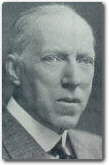Origins
Morris dancing in England has its beginnings principally during the reign of Henry VII. The dance known as Moorish or Moresque dancing was known in the courts of Europe from the 12thC and was associated with the Moorish rule over Spain and Portugal from 711 to 1492 AD. There were many English links with Spain particularly with Castile and Aragon and Moorish customs were witnessed by generations of English soldiers.
Henry VII had been educated at the French court and in 1494 he paid £2 for the 'playing of the Mourice Daunce' at the English court. During the reign of Henry VIII the Morris moved from the court to holiday celebrations like the Whitsun Games. It spread throughout the country, notably down the Thames valley from Kingston and Richmond to Marlow,  Reading, Oxford, etc., reaching its peak of public popularity between 1580 - 1630.
Reading, Oxford, etc., reaching its peak of public popularity between 1580 - 1630.
Performances mainly at Whitsun (a Christian festival superimposed on earlier festivals such as the pagan 'Belthane' and Roman 'Floralia') gave rise to the popular association with Spring, fertility and primitive forces.
Development of Traditions
Many other influences became integrated with the Morris dancing gradually modifying the performance from individual to group and processional but beyond the 17thC popularity declined and the activity became associated with drinking and fighting and it lost respectable support.
By the 19thC the Morris was confined to rural areas principally around the Cotswolds with the Wychwood Forest as a central point. A chance encounter between the Headington Quarry Morris Men and Cecil Sharp in 1899 drew the attention of the educated classes to Morris dancing and thus prevented a unique folk custom from becoming extinct.
Some village traditions like Bampton, Chipping Campden, Eynsham, Headington and Abingdon managed to survive with only a short break. Sharp worked tirelessly to record the music and dances from over 20 villages allowing reconstruction and revival to occur and today the Morris is again a popular English holiday entertainment.


